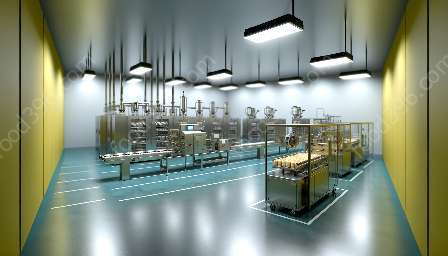Vacuum packaging plays a pivotal role in modern packaging technologies and the field of food preservation and processing. This method involves the removal of air from the package before sealing. By placing the food in a vacuum environment, a range of benefits, including increased shelf life and improved food safety, can be achieved. In this comprehensive guide, we will explore the importance of vacuum packaging, its impact on food preservation, and its relevance to packaging technologies.
Vacuum Packaging: Exploring the Basics
Vacuum packaging, also known as reduced oxygen packaging, involves the removal of air from the packaging before sealing the product. This process creates an oxygen-free environment, which is crucial for preserving the quality and freshness of the contents. By eliminating oxygen, the growth of aerobic microorganisms is significantly reduced, thereby extending the shelf life of the packaged food.
One of the primary methods of achieving vacuum packaging is through the use of vacuum sealers, which remove air from the packaging using a vacuum pump before sealing the package. This technology is widely employed in various sectors, including food packaging, pharmaceuticals, and electronic components.
The Significance of Vacuum Packaging in Food Preservation
Vacuum packaging plays a crucial role in preserving perishable foods by inhibiting the growth of spoilage microorganisms and slowing down oxidative reactions. Unlike traditional packaging methods, such as storing food in air-permeable containers, vacuum packaging removes the oxygen that promotes the deterioration of food. This method effectively extends the shelf life of food products, thereby reducing food waste and enhancing sustainability.
Moreover, vacuum packaging helps maintain the nutritional value and sensory attributes of the packaged food. By minimizing exposure to oxygen, vitamins, flavors, and colors are better retained, ensuring that consumers enjoy products with enhanced quality and taste.
Enhancing Food Safety through Vacuum Packaging
Food safety is a primary concern in the food industry, and vacuum packaging contributes significantly to ensuring the safety of packaged products. By creating an oxygen-deprived environment, vacuum packaging inhibits the growth of pathogenic bacteria, such as Salmonella, Listeria, and Escherichia coli, which are responsible for foodborne illnesses. This capability to control microbial growth, coupled with proper handling and storage, makes vacuum packaging a vital tool in preventing food contamination and safeguarding consumer health.
Vacuum Packaging in Packaging Technologies
Within the realm of packaging technologies, vacuum packaging stands out as a versatile and efficient method for preserving a wide array of products. The ability to customize packaging materials and adapt the vacuum sealing process to different product requirements makes this technology indispensable in various industries.
From protecting sensitive electronic components to extending the shelf life of pharmaceuticals, vacuum packaging has diverse applications beyond the realm of food preservation. Furthermore, the advancements in vacuum sealing equipment and materials continue to redefine the standards of product protection and longevity in the field of packaging.
Conclusion
Vacuum packaging is a cornerstone of modern packaging technologies and food preservation strategies, offering extensive benefits for both producers and consumers. By creating an oxygen-depleted environment, this method significantly extends the shelf life of products, enhances food safety, and maintains the quality and integrity of packaged items. As the demand for sustainable and safe packaging solutions continues to grow, the role of vacuum packaging in revolutionizing the packaging and food industries is set to expand further.

